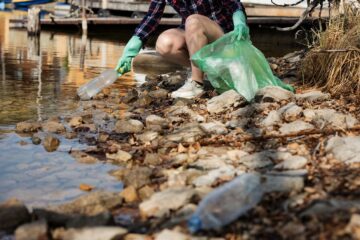![]()
- Introduction:
- Union Carbide India Limited
- About the Disaster
- Union Carbide Corporation v. Union of India and others
- Changes Post this Tragedy
- Bhopal Gas Leak Disaster Act (1985)
- The Environment (Protection) Act (1986) and Criminal liability provisions of the Environment Protection Act, (1986)
- Factories Act (1987)
- The National Environment Appellate Authority Act (1987)
- The Public Liability Insurance Act (1991)
- The National Environment Tribunal Act (1995)
- Chemical Accidents rules (1996) and Provisions in Chemical Accidents Rules (1996)
- National Green Tribunal Act (2010)
- Conclusion
Introduction:
On 2 December 1984, the people of Bhopal slept expecting that the night would be the same as always but who knew that life would completely change for them that night. An American pesticide plant named Union Carbide India Limited (UCIL) was the main reason for the Bhopal Gas Leak- One of The World’s Worst Industrial Disasters. This disaster took place as water entered the Methyl Isocyanate Gas (MIC Gas)[1] tank. Owing to this the temperature inside the tank reached over 200-degree Celsius and lakhs of people got exposed to MIC gas which is so poisonous that it can cause death in minutes of inhalation if its concentration exceeds 21 parts per million (PPM).
Union Carbide India Limited
Union Carbide India Limited was a chemical company established in 1934, eventually expanding to employ 9,000 people working at 14 plants in five divisions. UCIL was 50.9% owned by Union Carbide and Carbon Corporation (UCC) and 49.1% by Indian investors including the Government of India and government-controlled banks. UCIL produced batteries, carbon products, welding equipment, plastics, industrial chemicals, pesticides, and marine products. In 1970 UCIL built a pesticide plant in Bhopal, India, which gained worldwide attention as a result of the disaster. At the time of the disaster, UCIL was ranked twenty-first in size among companies operating in India. In 1994, UCC sold its entire stake in UCIL to McLeod Russel India Limited of Calcutta, which renamed the company Eveready Industries India Limited. The CEO of UCIL was Warren Anderson.[2]
About the Disaster
During the 2-3 December 1984 night, Tank E610 of UCIL in Bhopal, leaked because of the reaction between water and methyl isocyanate, which is a very dangerous reaction. The incident took place because of the negligence of the company and its employees. When the poisonous gas leaked and had spread in the atmosphere, people started facing a variety of symptoms. Symptoms like vomiting and coughing etc. were very common. People became breathless & all of them rushed to the hospital, expecting that they will be fine after the treatment. But since a lot of people needed treatment together, there was a lack of beds in hospitals and all of them could not be treated. Doctors knew the reason for the symptoms but little did they know about how to treat the patients. Yet the doctors tried their best and treated them as per the best of their knowledge and experience. The situation was so bad that thousands of people died, there was nobody present for their last rites and there was no space left in crematoriums or any of the burial sites.
Warren Martin Anderson, an American businessman and the CEO of UCIL was arrested for only four days and was granted bail on 7 December 1984. He left India soon after bail and never did he return. At the age of 92, he died on 29th September 2014 in Florida.[3] It was said that Congress was under the pressure of the US government to keep their US citizens safe. Hence, the then PM of India, Rajiv Gandhi, and CM of Madhya Pradesh, Arjun Singh tried their level best to save Anderson from this matter.
It was hard to figure out who all were responsible for this massacre as this big leak in the sensitive plant was the result of the fault of many and not one. UCIL did not have much of the safety and emergency equipment, the spraying system, pressure gauge, flare tower and other equipment like these which could have saved a million lives were not even working properly. Even the staff that the plant had was unskilled and cheap as the old and skilled staff was fired just to save money. Animals too were harmed because of the gas leak. Innumerable humans and animals died.
In the case of Union Carbide Corporation v. Union of India and others, the UCC and UCIL were directed to pay 470 million dollars on or before 31st March 1989 to settle all claims arising from the tragedy.[4] This settlement amount seems to be a good one seeing at once but after this was divided into the affected people and relatives of the dead, it was found that the per-person amount was just too less, and was not a valid compensation for the losses. After 25 years of this incident, in 2010, seven employees of the Indian army in this American UCIL plant were convicted for the charge of death by negligence and given a jail sentence of only two years. This two-year imprisonment seems no compensation for ruining 3 generations and negligently being the cause of death of thousands of animals and humans.
The carelessness of the factory ended up being the reason for the death and ruined the lives of so many. Even after the end of this incident, it didn’t leave an effect! Children of those who experienced this incident or whose parents experienced the same are born with physical and mental deformities and twisted limbs etc.[5]
Union Carbide Corporation v. Union of India and others
In a claim for damages filed by the Union of India on behalf of all claimants under the Bhopal Gas Leak Disaster (Processing of Claim) Act, 1985, the Union Carbide Corporation filed an application in revision in the Supreme Court under Section 155 of the CPC, challenging the order of the Bhopal District Court. Both the Union Carbide Corporation and the Union of India filed separate Supreme Court challenges against the Madhya Pradesh High Court’s decision, which were heard concurrently. On behalf of the victims of the Bhopal gas accident, damages were sought. The Court considered the prima facie evidence to calculate the damages, as well as the issue of domestication of the decree in the United States for purposes of execution. It looked at what number of damages would be “fair, equitable, and reasonable” in the case’s overall settlement. The Court cited the case of M.C. Mehta v Union of India (AIR 1987 SC 1086), in which it was stated that the number of damages payable had to be proportional to the size and capacity of the businesses for the compensation to be deterrent.
The court decided that:
(1) The Union Carbide Corporation should pay the Union of India a sum of US$470 million (four hundred and seventy million) in satisfaction of all claims, rights, and responsibilities linked to and arising out of the Bhopal gas disaster, according to the Court.
(2) On or before March 31, 1989, the Union Carbide Corporation shall pay the aforementioned money to the Union of India.
(3) All civil proceedings related to and arising out of the Bhopal gas disaster shall be transferred to the Supreme Court and shall be concluded by the settlement, and all criminal proceedings related to and arising out of the disaster shall be quashed, wherever they may be pending, to enable the settlement to be implemented.[6]
Changes Post this Tragedy
Many acts and rules have been introduced after the Bhopal gas leak incident. The major rules which were passed in India after the Bhopal disaster to ensure safety and to control disasters are:
Bhopal Gas Leak Disaster Act (1985)
An Act to confer certain powers on the Central Government to secure those claims arising out of, or connected with, the Bhopal gas leak disaster is dealt with speedily, effectively, equitably and to the best advantage of the claimants and for matters incidental thereto.[7]
The Environment (Protection) Act (1986) and Criminal liability provisions of the Environment Protection Act, (1986)
This act provides for the protection and improvement of the environment and related matters.[8]
Factories Act (1987)
This act said that- “if any inflammable gas, fume or dust is likely to be present in such chamber, tank, vat, pipe, flue or other confined space, no lamp or light other than that of flame-proof construction shall be permitted to be used therein”.[9]
The National Environment Appellate Authority Act (1987)
This act deals with the Constitution of Appellate Authority and matters relating to the power’s functions of members, Central Government to perform the functions established a body under Section 3 of the Act called as National Environment Appellate Authority.[10]
The Public Liability Insurance Act (1991)
This act provides for damages to victims of an accident that occurs as a result of handling any hazardous substance. The Act applies to all owners associated with the production or handling of any hazardous chemicals.[11]
The National Environment Tribunal Act (1995)
The National Environment Tribunal Act was enacted by the parliament on 17th June 1995, India faces many environmental issues due to the growing population as the population has been the major cause not only to the environmental degradation by causing pollution but also acts as major participation in environmental accidents.[12]
Chemical Accidents rules (1996) and Provisions in Chemical Accidents Rules (1996)
The Chemical Accident Rules, 1996 The Government of India, Ministry of Environment under the Environment Protection Act, 1986 has promulgated the Chemical Accidents (Emergency, Planning, Preparedness & Response) Rules 1996 for preparedness and response, during operation of on-site and Off-site Emergency Plans during a chemical disaster.[13]
National Green Tribunal Act (2010)
National Green Tribunal (NGT) was established on 18th October 2010 under the NGT Act of 2010 as a specialized body for handling any environmental disputes that involve multi-disciplinary issues. It was formed by replacing the National Environment Appellate Authority.[14]
Conclusion
To date, there is no clarity as to how many people exactly died due to this disaster, nobody knows the real statistics. It’s disheartening to know that this incident which could have been controlled and prevented has affected 3 generations and has worsened their lives. After this incident, it seems as if the lives of the people of Bhopal were just worthless for the government as well as the authorities of UCIL. The people of Bhopal still breathe and drink contaminated air & water. They deserve poison-free air, pure water, justice, and assurance that such a thing is not going to happen ever again.
References:
[1] Wikipedia Contributors, Methyl isocyanate Wikipedia (2019), https://en.wikipedia.org/wiki/Methyl_isocyanate.
[2] Wikipedia Contributors, Union Carbide India Limited Wikipedia (2019), https://en.wikipedia.org/wiki/Union_Carbide_India_Limited (last visited Nov 17, 2019).
[3] Warren Anderson (American businessman), Wikipedia (2021), https://en.wikipedia.org/wiki/Warren_Anderson_(American_businessman) (last visited Nov 5, 2021).
[4] Wikipedia Contributors, Bhopal disaster Wikipedia (2019), https://en.wikipedia.org/wiki/Bhopal_disaster.
[5] Special Report: The Bhopal Gas Tragedy, www.youtube.com (2014), https://youtu.be/dv7tLENy4qo (last visited Nov 5, 2021).
[6] Union Carbide Corporation (Appellant) v. Union of India and others (Respondents) | InforMEA, www.informea.org, https://www.informea.org/en/court-decision/union-carbide-corporation-appellant-v-union-india-and-others-respondents.
[7] Bhopal Gas Leak Disaster (Processing of Claims) Act, 1985, Latest Laws, https://www.latestlaws.com/bare-acts/central-acts-rules/environmental-laws/bhopal-gas-leak-disaster-processing-of-claims-act-1985/ (last visited Nov 5, 2021).
[8] Environment Protection Act, 1986 – Provisions, Features, Latest News. EPA 1986 for IAS, BYJUS, https://byjus.com/free-ias-prep/environment-protection-act-1986/ (last visited Nov 5, 2021).
[9] The Factories (amendment) Act, 1987 – DOC Download ALL DISCUSSIONS (LIST), www.citehr.com, https://www.citehr.com/243950-factories-amendment-act-1987-doc-download.html (last visited Nov 5, 2021).
[10] The National Environment Appellate Authority Act, 1997 – Lawyers Law, https://lawyerslaw.org/the-national-environment-appellate-authority-act-1997/ (last visited Nov 5, 2021).
[11] Public Liability Insurance Act 1991| National Portal of India, www.india.gov.in, https://www.india.gov.in/public-liability-insurance-act-1991-0 (last visited Nov 5, 2021).
[12] The National Environment Tribunal Act, 1995 – Lawyers Law, https://lawyerslaw.org/the-national-environment-tribunal-act-1995/#:~:text=The%20National%20Environment%20Tribunal%20Act%20was%20enacted%20by (last visited Nov 5, 2021).
[13] The Chemical Accident Rules, 1996 | Labour Commissioner |, labour.delhi.gov.in, https://labour.delhi.gov.in/content/chemical-accident-rules-1996#:~:text=The%20Chemical%20Accident%20Rules%2C%201996%20The%20Government%20of.
[14] National Green Tribunal (NGT) – Objectives, Members, Chairman & Headquarter [UPSC Notes], BYJUS, https://byjus.com/free-ias-prep/concepts-in-news-national-green-tribunal/#:~:text=National%20Green%20Tribunal%20%28NGT%29%20was%20established%20on%2018th (last visited Nov 5, 2021).



0 Comments